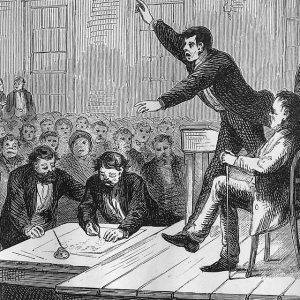 To many people, the history of alcoholic mutual aid societies begins in 1935 with the founding of Alcoholics Anonymous (A.A.). A.A. history buffs are aware that there was another society, the Washingtonians, that existed almost a century before Bill Wilson and Dr. Robert Smith first met. But few are aware of just how many pre-A.A. alcoholic mutual aid societies existed before 1935. There were early Native American recovery "circles" that date as early as 1750. Numerous recovery-focused fraternal temperance societies, many branches of the ribbon reform clubs, the United Order of Ex-Boozers, and many societies linked to 19th and early 20th century treatment institutions: The Ollapod Club, the Godwin Association, the Dashaways, the Keeley Leagues, and the Jacoby Club, all existed prior to A.A. A.A. s survival takes on added historical significance in light of the demise of so many of its predecessors.
To many people, the history of alcoholic mutual aid societies begins in 1935 with the founding of Alcoholics Anonymous (A.A.). A.A. history buffs are aware that there was another society, the Washingtonians, that existed almost a century before Bill Wilson and Dr. Robert Smith first met. But few are aware of just how many pre-A.A. alcoholic mutual aid societies existed before 1935. There were early Native American recovery "circles" that date as early as 1750. Numerous recovery-focused fraternal temperance societies, many branches of the ribbon reform clubs, the United Order of Ex-Boozers, and many societies linked to 19th and early 20th century treatment institutions: The Ollapod Club, the Godwin Association, the Dashaways, the Keeley Leagues, and the Jacoby Club, all existed prior to A.A. A.A. s survival takes on added historical significance in light of the demise of so many of its predecessors.
The fate of one of these pre-A.A. mutual aid societies is detailed in Charles Brace's 1872 book, The Dangerous Classes of New York. Brace tells the story of Orville "Awful" Gardner, a prize-fighter, known for his drunken binges and his brutality in and outside the ring. (He once bit off a man's nose.) Gardner experienced a profound religious conversion through which he became sober and experienced a call to help other "hard cases" like himself. Gardner opened a "Coffee and Reading Room" in a ward in New York City notorious for its drunkenness and vice. This small experiment evolved into what became known as The Drunkard's Club. Brace describes:
The rooms are filled with reformed or reforming young men. The great difficulty with a man under vices is to make him believe that change for him is possible. The sight of Gardner always demonstrated this possibility. The place has become a kind of central point for all of those who have become more or less addicted to excessive drinking, and are desirous of escaping from the habit.
According to Brace, more than 700 men were sobered under the influence of the Club. The fate that befell the Drunkard's Club was not atypical of pre-A.A. mutual aid societies. Gardner's health began to fail from the strain of his past and he was forced to retire to a quiet place in the country. Without his leadership, the Drunkard's Club collapsed.
In an interesting twist of historical continuity, it was this same "Awful" Gardner who inspired the religious conversion of another alcoholic, Jerry McAuley, while both were in Sing Sing Prison. McAuley went on to found the Water Street Mission, the first urban mission that catered its message and services to the late stage alcoholic.
Like the Phoenix rising from the ashes of its own pyre, new addiction recovery mutual aid societies followed the Drunkard's Club until the first society arrived with the right combination of recovery principles and organizational practices that allowed it to outlive its founding generation.
For more stories from this early history, see the new edition of Slaying the Dragon: The History of Addiction Treatment and Recovery in America.